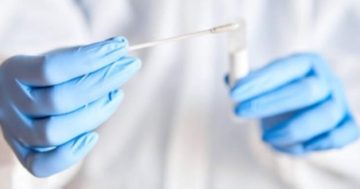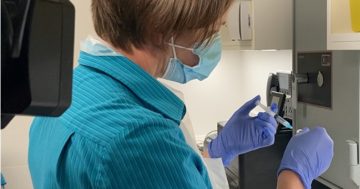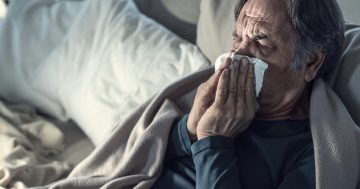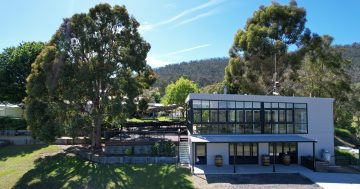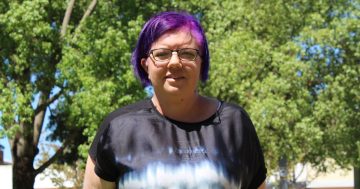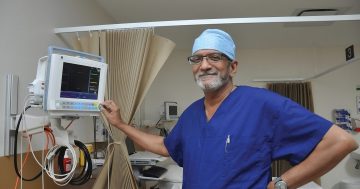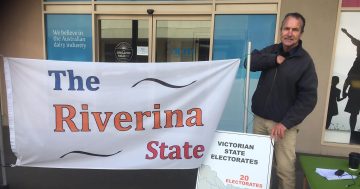
COVID-19 contact tracing can be a lengthy and complex task. Image: Supplied.
From 8:30 am until 10 pm, seven days a week, contact tracers are interviewing people diagnosed with COVID-19 to determine when they were likely to be infectious and where they were during that period of time.
Based in Albury, Goulburn and remotely across southern NSW, the contact tracing team is under pressure to contact each case within 24 hours of their diagnosis.
Their approach is rigorous, but it doesn’t always result in all exposure sites being identified at once. Even when exposure sites are discovered, there are sound reasons underpinning why they’re not always made public.
Murrumbidgee Local Health District’s director of public health, Tracey Oakman, said there are instances where contact tracers are not able to speak to cases immediately.
“Sometimes people with COVID-19 are very unwell, they might be asleep, or their phone might be flat,” said Ms Oakman, whose team covers Murrumbidgee Local Health District and Southern NSW Local Health District.
“Sometimes their phone number is incorrect, or their address is wrong, but if we don’t get onto them within a reasonable time frame, we then ask police to contact them – we don’t leave it.”
Once the team has established contact, it’s an immediate priority for tracers to determine when they may have been contagious and possibly exposed others in the community to COVID-19. They generally work on the basis of people being contagious for two days prior to the onset of symptoms, or if they’re asymptomatic, two days prior to their swab being taken.
However, if someone is in a high-risk setting, such as a hospital or aged care facility, they look back three days before symptoms started.
Tracers may find there was a week’s delay between people having had mild symptoms – which they may have mistakenly thought was just hay fever – and getting tested. This impacts how quickly exposure sites can be announced.
Contact tracers need to support the affected person to remember what they did a week ago, which isn’t always fresh in their memory. QR codes are invaluable when people have checked in appropriately, but tracers may also need to ask cases to look through bank transactions and loyalty reward card records to access the specific dates and times they were in public places.
That can then allow their detective work to dive deeper, potentially trawling through CCTV footage, requesting rosters from employers, or information from appointment books.
When someone has paid with cash and remembers the amount, but not the exact time or date, tracers might call the business and ask them to search though their sale transactions to find a match.
“If someone is infectious the day they have the swab, we will be able to work our affected venues really quickly,” said Ms Oakman.
“When someone’s infectious period was seven days before we interview them, people might ask, ‘Why did you hold onto that information for seven days?’
“In reality, as soon as we are confident we know a venue, date and time, we share that information with the public. An exception to making a venue public would be when we know we have been able to contact everyone at that venue who was at risk.
“We are very aware that when we name a venue, we create concern and distress so we don’t want to frighten people, create financial harm to a business, or have people going into quarantine if we don’t need to.
“We don’t go to the media or make a public announcement if there is no public benefit – that’s a judgement we need to make. But as soon as we are aware of an exposure site that puts the public at risk, we put that in a media release and send it to Sydney to be loaded onto the NSW Health COVID-19 case locations webpage.”
Ms Oakman said that sometimes people with COVID-19 are reluctant to disclose where they’ve been, which can also lead to exposure sites not being announced immediately, or in chronological order.
“Some people feel ashamed or guilty, and some people are hiding things so it is up to our very skilled contact tracers to illicit the full history, which is sometimes difficult,” she said.
“There are also people who innocently forget things. You interview someone today and three days later they remember where they were a week ago. People might be feeling sick or in shock with their diagnosis; there are a whole range of issues that can cloud their thinking.”
Ms Oakman said the contact tracing team is working under significant pressure to gain accurate information and protect their communities. They also feel the emotional impact of working with people who are processing a confronting diagnosis.
“Our team are human and compassionate people,” she said. “They are hearing sad and distressing stories, and supporting people as best they can.
“Some people who are isolating have complex needs, and we have a referral process to make sure people get the support they need.”
Ms Oakman said it’s important to remember that everyone working in contact tracing is local to a community they care about, and conspiracy theories suggesting information is withheld are damaging and untrue.
“It is in our interest to make sure our community is safe so our mothers, fathers, daughters and sons don’t get infected,” she said. “We are part of the community, too, and none of us would benefit from withholding information if there was a risk.”
Original Article published by Kim Treasure on About Regional.







